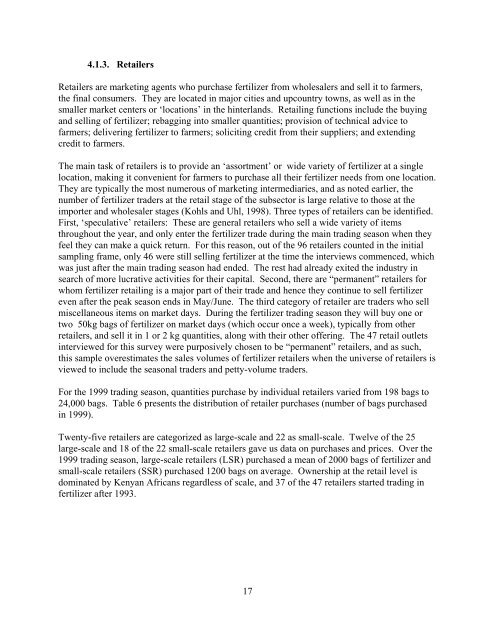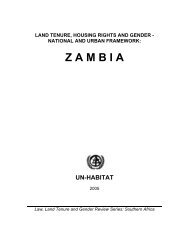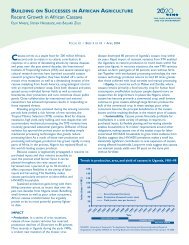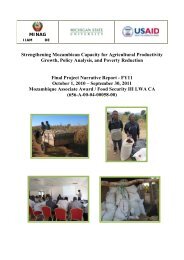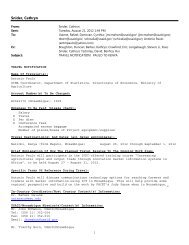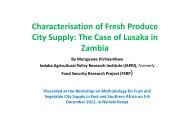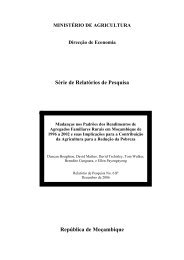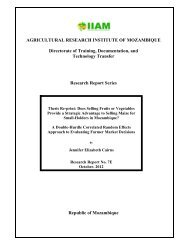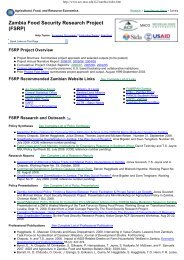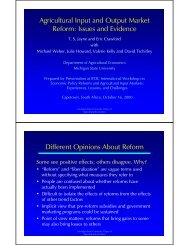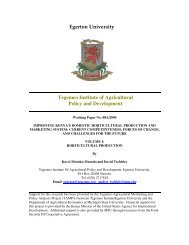Fertilizer Markets and Agricultural Production Incentives - Tegemeo ...
Fertilizer Markets and Agricultural Production Incentives - Tegemeo ...
Fertilizer Markets and Agricultural Production Incentives - Tegemeo ...
Create successful ePaper yourself
Turn your PDF publications into a flip-book with our unique Google optimized e-Paper software.
4.1.3. Retailers<br />
Retailers are marketing agents who purchase fertilizer from wholesalers <strong>and</strong> sell it to farmers,<br />
the final consumers. They are located in major cities <strong>and</strong> upcountry towns, as well as in the<br />
smaller market centers or ‘locations’ in the hinterl<strong>and</strong>s. Retailing functions include the buying<br />
<strong>and</strong> selling of fertilizer; rebagging into smaller quantities; provision of technical advice to<br />
farmers; delivering fertilizer to farmers; soliciting credit from their suppliers; <strong>and</strong> extending<br />
credit to farmers.<br />
The main task of retailers is to provide an ‘assortment’ or wide variety of fertilizer at a single<br />
location, making it convenient for farmers to purchase all their fertilizer needs from one location.<br />
They are typically the most numerous of marketing intermediaries, <strong>and</strong> as noted earlier, the<br />
number of fertilizer traders at the retail stage of the subsector is large relative to those at the<br />
importer <strong>and</strong> wholesaler stages (Kohls <strong>and</strong> Uhl, 1998). Three types of retailers can be identified.<br />
First, ‘speculative’ retailers: These are general retailers who sell a wide variety of items<br />
throughout the year, <strong>and</strong> only enter the fertilizer trade during the main trading season when they<br />
feel they can make a quick return. For this reason, out of the 96 retailers counted in the initial<br />
sampling frame, only 46 were still selling fertilizer at the time the interviews commenced, which<br />
was just after the main trading season had ended. The rest had already exited the industry in<br />
search of more lucrative activities for their capital. Second, there are “permanent” retailers for<br />
whom fertilizer retailing is a major part of their trade <strong>and</strong> hence they continue to sell fertilizer<br />
even after the peak season ends in May/June. The third category of retailer are traders who sell<br />
miscellaneous items on market days. During the fertilizer trading season they will buy one or<br />
two 50kg bags of fertilizer on market days (which occur once a week), typically from other<br />
retailers, <strong>and</strong> sell it in 1 or 2 kg quantities, along with their other offering. The 47 retail outlets<br />
interviewed for this survey were purposively chosen to be “permanent” retailers, <strong>and</strong> as such,<br />
this sample overestimates the sales volumes of fertilizer retailers when the universe of retailers is<br />
viewed to include the seasonal traders <strong>and</strong> petty-volume traders.<br />
For the 1999 trading season, quantities purchase by individual retailers varied from 198 bags to<br />
24,000 bags. Table 6 presents the distribution of retailer purchases (number of bags purchased<br />
in 1999).<br />
Twenty-five retailers are categorized as large-scale <strong>and</strong> 22 as small-scale. Twelve of the 25<br />
large-scale <strong>and</strong> 18 of the 22 small-scale retailers gave us data on purchases <strong>and</strong> prices. Over the<br />
1999 trading season, large-scale retailers (LSR) purchased a mean of 2000 bags of fertilizer <strong>and</strong><br />
small-scale retailers (SSR) purchased 1200 bags on average. Ownership at the retail level is<br />
dominated by Kenyan Africans regardless of scale, <strong>and</strong> 37 of the 47 retailers started trading in<br />
fertilizer after 1993.<br />
17


